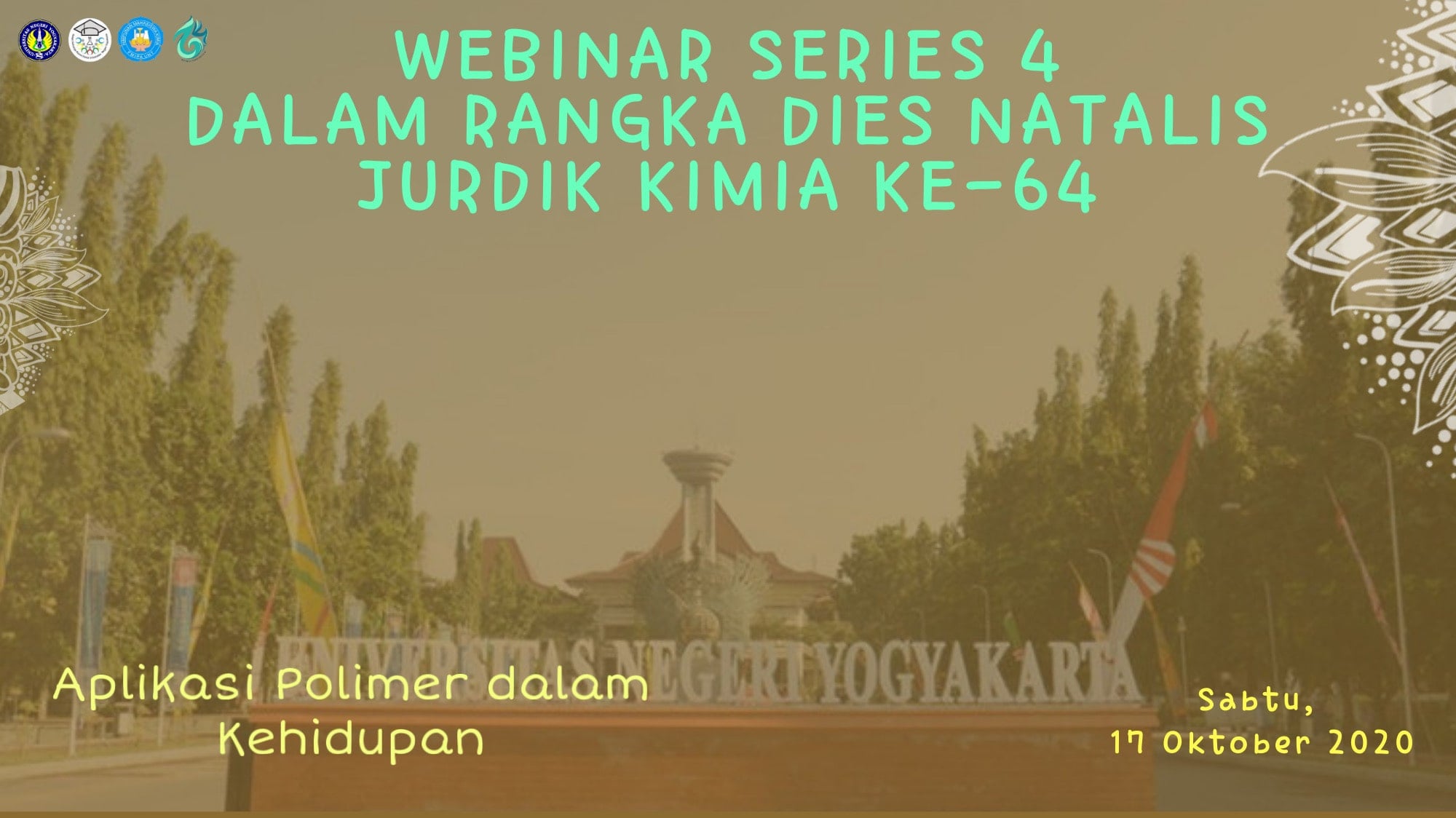 Bahasa Indonesia
Bahasa Indonesia English
English
You are here
Chemistry Education Department Webinar - Series 4

Saturday, October 17, 2020, Webinar Series 4 was held in the framework of the Chemical Education Department's Anniversary. Webinar series 4 raises the theme of polymer applications in daily life. A total of 299 participants from various backgrounds such as lecturers, teachers, practitioners, and students participated in the webinar series 4.
Prof. Dr. Azlan Kamari from Univerisiti Pendidikan Sultan Idris, Malaysia as the first speaker is a lecturer at the Faculty of Science and Mathematics, especially in the field of analytical chemistry expertise. He delivered innovation in biofilms for food packaging. According to Prof. Dr. Azlan Kamari, based on the weaknesses biopolymers cannot be used as food wrappers by themselves, biopolymers require additional ingredients including: (1) natural additives such as plant extracts, essential oil, cinnamaldehyde, etc.); (2) nanomaterials (TiO2, AgO, ZnO, GO, etc.); (3) clays and minerals (bentonite, boehmite, etc.); and (4) Vitamins (C, E, etc.). Their characteristics that are light weight, chemically resistant, thermically insulating, can be shapde, durable, easy to colour in the mass, so that easily portable.
Prof. Dr. Endang Widjajanti, conveyed various applications of nata-based cellulose membranes in various fields, some of which are in the food industry such as pudding, edible film and supplements. As for the field of biotechnology as an absorbent, biosensor, biofilter, and for cell immobilation. In the field of food energy, the cellulose membrane of nata can be used as an electrolyte membrane. Nata cellulose membranes can also be used in the cosmetic industry as masks, or the pharmaceutical industry as drug intermediates and tissue substitutes. More broadly, the cellulose membrane in the field of nanoparticles is a semiconductor and thermoplastic.


Sistem Informasi
Kontak Kami
Program Studi Pendidikan Kimia
FMIPA Universitas Negeri Yogyakarta
Gedung Dekanat D.07 FMIPA UNY
Kampus Karangmalang Yogyakarta 55281
Telp. (0274)586168 Pes. 115
Email: pend_kimia@uny.ac.id
Copyright © 2024,
